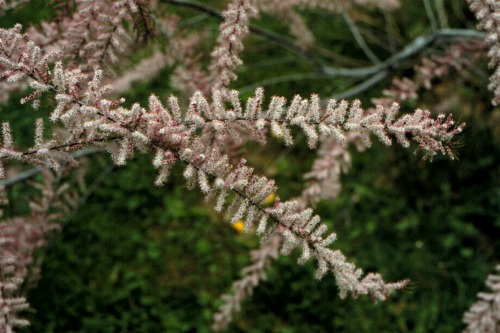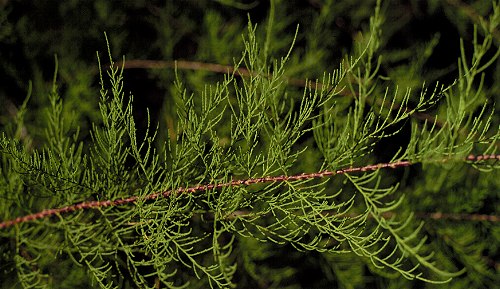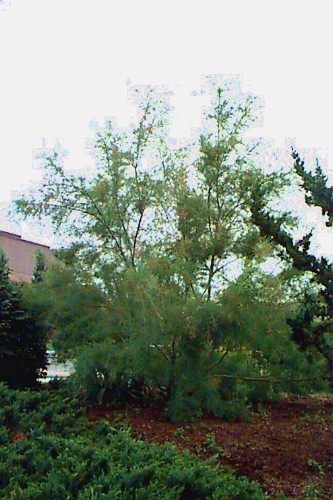Tamarix parviflora
Small-flowered Tamarix
Tamaricaceae
ExpandHabitat
- native to southeastern Europe
- hardy to zone 5
- Special Note: This species has demonstrated an invasive tendency in Connecticut, meaning it may escape from cultivation and naturalize in minimally managed areas. For more information, .
Habit and Form
- a shrub or small tree
- arching branches
- to 15' tall
- deciduous
Summer Foliage
- leaves in alternate arrangement
- leaves are sessile, and lance-shaped
- 0.1" long
- foliage has a feathery appearance
- appears somewhat like juniper foliage
Autumn Foliage
- unimpressive
- green fades and some yellow develops
Flowers
- light pink, small flowers
- blooms in late May to early June
- floral parts in 4's, unlike other Tamarix sp. with parts in 5's
- blooms on the previous seasons growth
- light, fluffy clusters
Fruit
- ornamentally unimportant capsules
Bark
- brown or somewhat purplish
Culture
- prune just after flowering to avoid loss of bloom effect
- root system is sparse so best as a container transplant
- full sun
- average soils
- somewhat salt tolerant
- renewal pruning periodically to retain good landscape form
Landscape Use
- useful for fine, airy texture
- seaside locations where salts spray and dry sandy soils are a concern
- for pink bloom
- shrub border
- looks best in groupings or masses
Liabilities
- winterkill of the tops of the plants in severe winters of zone 5
- stem cankers
- need for renewal pruning maintenance
- winter texture is coarse
ID Features
- overarching branching habit
- fine, scale like foliage
- pink, 4-petaled flowers
Propagation
- by cuttings or seed
Cultivars/Varieties
- none


